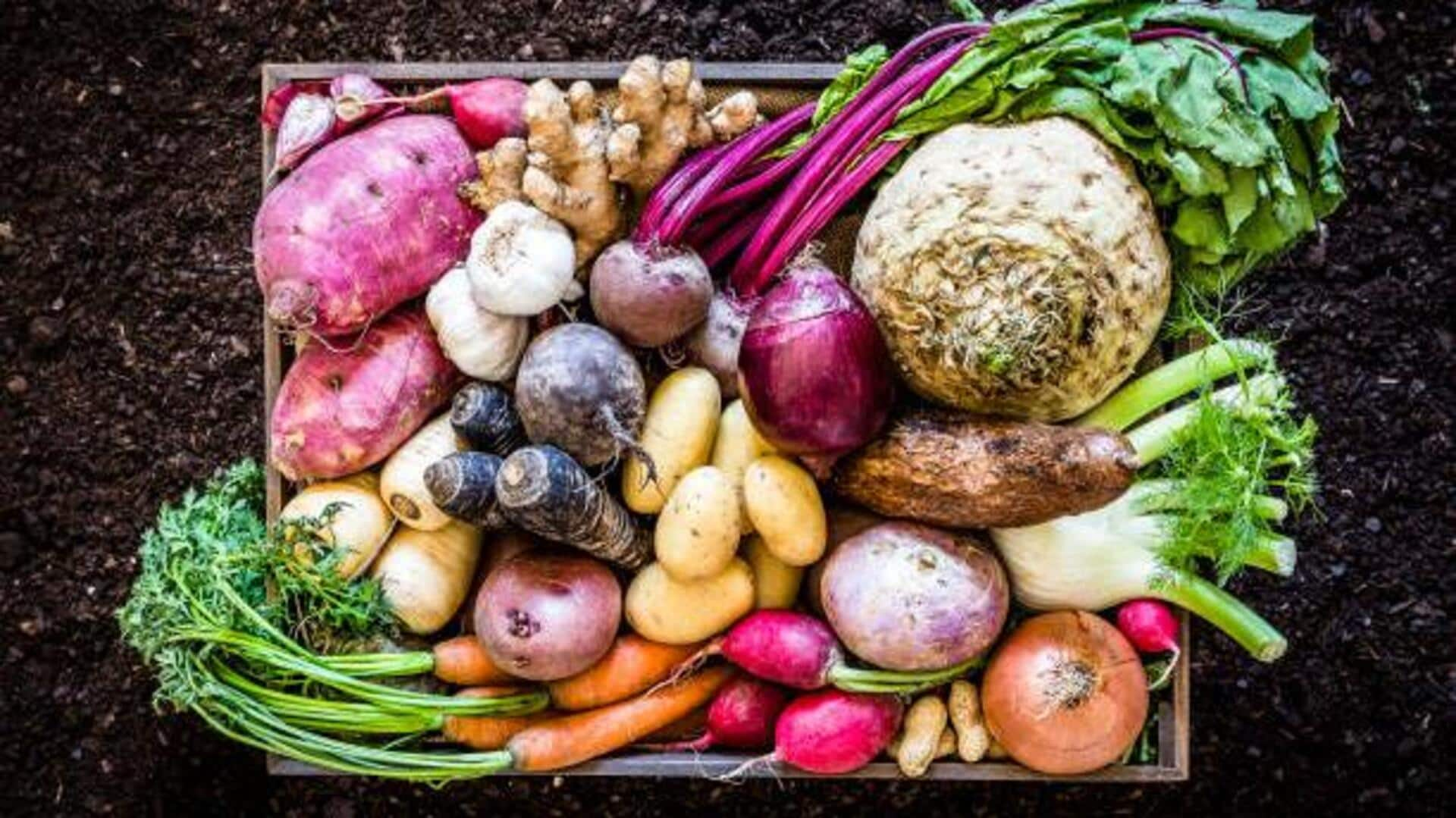
Add variety to your cooking with these root vegetables
What's the story
African root vegetables are a staple in many traditional diets across the continent. These nutrient-rich roots not only provide essential vitamins and minerals but also add unique flavors to dishes. As plant-based diets gain popularity worldwide, these vegetables offer exciting new options for those looking to diversify their meals. From improving nutrition to supporting sustainable agriculture, incorporating these roots into your diet can be beneficial.
#1
Cassava: A versatile staple
Cassava is a widely consumed root vegetable in Africa, famous for its versatility. It can be boiled, fried, or mashed and is often used to make flour for baking. Cassava is an excellent source of carbohydrates and provides some vitamin C and folate. Its ability to grow in poor soil conditions makes it an important crop for food security in many regions.
#2
Yam: Nutrient powerhouse
Yams are nutrient-dense root vegetables that provide a range of vitamins and minerals. They are rich in potassium, manganese, and vitamin C. Yams can be roasted, boiled, or added to soups and stews. Their slightly sweet flavor makes them a great addition to both savory and sweet dishes. Yams also provide dietary fiber that aids digestion.
#3
Sweet potatoes: A sweet alternative
Sweet potatoes are loved for their natural sweetness and vibrant color. They are packed with beta-carotene (vitamin A precursor), vitamin C, potassium, and dietary fiber. Sweet potatoes can be baked, mashed, or added to salads for a nutritious boost. Their high antioxidant content makes them an excellent choice for supporting overall health.
#4
Cocoyam: A culinary delight
Cocoyam (or taro) has a starchy texture similar to potatoes but with a distinct flavor profile that adds depth to many recipes. It is rich in dietary fiber, which promotes gut health, as well as vitamins B6, E, and K, along with minerals like magnesium, copper, iron, and phosphorus. Cocoyams can be boiled, roasted, or fried, making them an ideal ingredient for soups, stews, curries, and other dishes.
#5
Taro root: Ancient nutrition source
Taro root has been cultivated for centuries, providing sustenance to communities around the world. It is packed with complex carbohydrates, which provide energy, along with essential nutrients like vitamin E, potassium, calcium, magnesium, and iron. Taro root can be boiled, steamed, baked, or fried, making it a versatile ingredient in various cuisines.